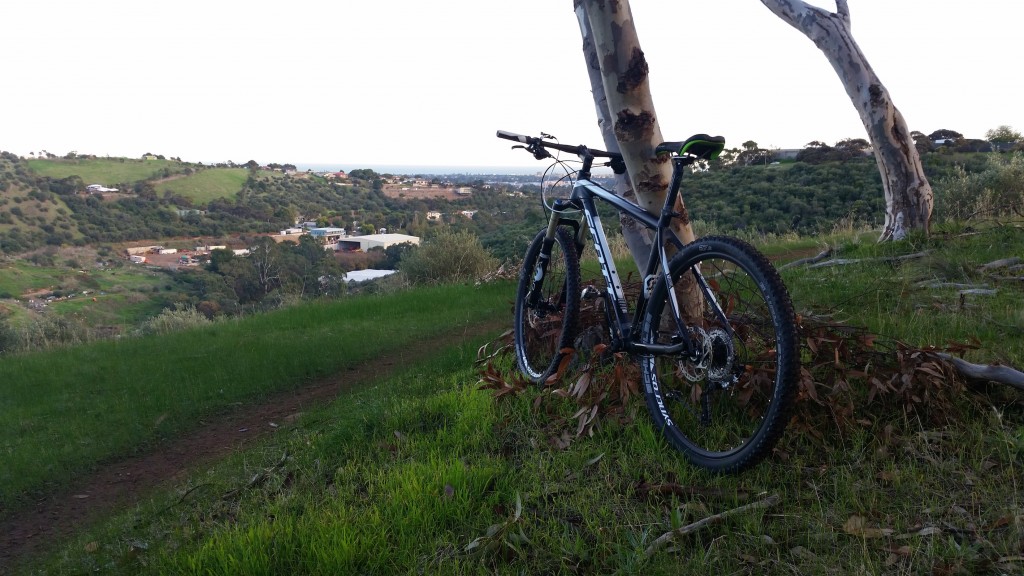Perhaps its a symptom of getting older, but I see far more connections between seemingly unrelated things these days. If it was twenty years ago and I was still embroiled in my pitiful attempt at a PhD in maths then I’d have probably called them homomorphisms. Mappings of concepts from one part of life on to another completely unrelated one on the assumption that the underlying rules of each system are more or less consistent.
In Layman’s terms – I draw a lot of parallels between things.
Of course I’m not the only one, as a very quick autocomplete check on Google will attest to…
The most recent ones that has been striking me, possibly because I’ve been doing a lot more of both recently, are the parallels between riding off-road bikes and making life decisions. I first got started riding trails after a period of road cycling inactivity. I knew that when I rode regularly I felt a lot better physically and mentally, but a range of logistical reasons meant that regular commuting to work wasn’t overly feasible, so I stopped doing it.
Also, I have to admit that I got bored with road riding.
When I was doing quite a lot of road riding, I enjoyed the camaraderie of being out there, and the almost meditative state that I attained when spending two or three hours in the saddle. What I didn’t like was that a good long road ride comfortably wipes out half a day. This was ok when I was loving it, but after a while the sheer monotony of road riding became a turnoff.
So I found a cheap second hand hardtail and set out for my local mixed trails reserve, which I am blessed to be within a ten minute ride of.
That was ten months and 639.3km (according to Strava) ago. In that time I’ve crashed twice and had countless near misses. I’ve learned to go as fast as I feel comfortable without risking too much bodily damage, I’m fit coming into winter, and I’m back riding to work (albeit in a new job which makes a MTB commute an ideal option).
But it has done more than this.
While road riding afforded me a time to tune out and meditate while my legs cranked the pedals for hour after hour, riding trails is a very different prospect. My thinking time usually occurs in fractions of a second. How fast can I take this corner before losing grip? When do I need to start a push to make it over a rocky climb? Which line to I take through a rutty/rocky/rooty section? When do I abandon hope, clip out and put my feet down rather than risk keeling over into the bush? Do I take the hero line or the safe one?
Unlike my experiences road cycling, riding trails is very much about making lots of decisions, sometimes every second or two, and depending on where you’re riding, it rarely stops.
This is where I see several striking parallels between riding off road and making decisions in everyday life, and so without any further farnarkling here are my seven life lessons that have been driven home in the last ten months out of the saddle.
1. Pick a path and commit to it
The only proper crash I had was when I came into a corner with two very distinct lines I could have ridden. One was high, fast and risky, the other low, slow and safe. I swear that in the fraction of a second before I hit the deck I changed my mind three times about which one I’d take, with the end result being that I took neither, hit a ridge that was separating the two lines, and down I went. If I had picked either of them I’d have been fine, but I dithered, and down I went.
Just like in life, assess the situation, make a decision, and then follow it through.
2. Focus on the path you want to take, not the obstacle you are trying to avoid.
This one holds true for all kinds of vehicular transportation, but when riding trails the obstacles are a deliberate part of the experience, and they are everywhere. Trees. Rocks. Roots. Ruts. Changing ground surfaces. The occasional poisonous snake. Whatever the case, once you’ve chosen a path and committed to it, then focus your eyes, your mind and your energy on the place you want to go. As a motorbike instructor, one of the first things we used to tell learners was that ‘where you look is where you go’, and I believe that is true in many aspects of life.
Accept that threats and challenges around you, be aware of them, but do not focus on them. Focus on the path you will take to get you to the other side.
3. Remember that no matter how confident or skilled you are, you can never see farther than the next corner.
One of the exciting (and for an old geezer like me) thing about riding new trails is that you really don’t know what is around the next corner. This makes for many a nice surprise, and the occasional pant-soiling moment of terror as you realise you’ve blazed around a blind corner into a steep drop, a rock pool or someone else coming in the other direction just as hard.
Find your limits (hopefully not getting too badly hurt in the process). Don’t be overconfident. Balance risk with reward.
4. Stop and take in the scenery.
The advent of tools like Strava can lure you into the trap of only focusing on one thing – your times. You run the risk of being so fixated on one thing that you miss out on so many other beautiful things that are going on around you. When something beautiful catches your eye, stop and admire it. Take a photo. Enjoy the moment. Unless you’re a pro, then there is no prize for going flat out everywhere all the time.
Whether it be Strava times, your bank balance, your number of followers on Twitter or whatever else – remember that these things are often just numbers. They don’t dictate everything in your life, and if you let them then you’ll miss out on much of the beauty that is right under your nose.
5. Be brave and explore.
Another thing I’ve discovered about riding trails is that, at least in my neck of the woods, many of them aren’t well signposted. I managed to get myself completely lost on the way to work recently as I tried to find an alternative way through the trails. For a moment I considered turning back the way I came, but I chose to keep going and see where I ended up. Eventually, after wandering through many narrow, unmarked trails I came out a considerable distance from where I thought I was, but overall it helped me piece the puzzle together of where I needed to be. The information I gained about different ways to ride to work was helpful, but so was the experience of being completely lost in the middle of a national park and forcing myself to chill out and have faith that I’d work it out.
In life, be brave. Try new things. Back both your ability and the overwhelming likelihood that you’ll be better for the experience.
6. Consider obstacles as challenges, not as blockers.
I’ve been riding my local trails for 10 months now, on average perhaps once a week, and there are still sections of trail that I have no idea how I could ride through. The good thing is that there are far fewer of these now than there was when I started, when just about everything not dead-flat looked moderately terrifying. For most of them, I tried once, twice, sometimes a bunch of times before I worked out how to overcome them. Often I had to try several different ways of getting through, changing line and speed to work out how to navigate them. I see people regularly leaving their bikes at the start and walking some of the more technically challenging trails, attempting to work out the game of mental Tetris that is needed to plot out the most appropriate path.
(I’ve no idea who the guy above was, but I’ve done that more than once along that stretch, just not as spectacularly)
The majority of obstacles in life can be overcome. Sometimes it takes several rounds of failure combined with some critical thought to make it through.
7. Even if you’re slower than 99% of the people out there, you’re lucky to be out there at all.
I’m by no means one of the quick folks out there. When I look at my times on Strava I am invariably somewhere near the middle of the pack in terms of this one measure. I am distinctly, wonderfully average in terms of my capabilities, and this has only been achieved after ten months of riding on the local trails network to get to this level of confidence. But to be honest, I didn’t care when I was just learning and was at the slower end of the spectrum, because at least I was lucky enough to be able to be out there giving it a go.
Performance isn’t everything. Life isn’t a race to the finish line. Just being there is more than many people either can or will do.
Enjoy it.

